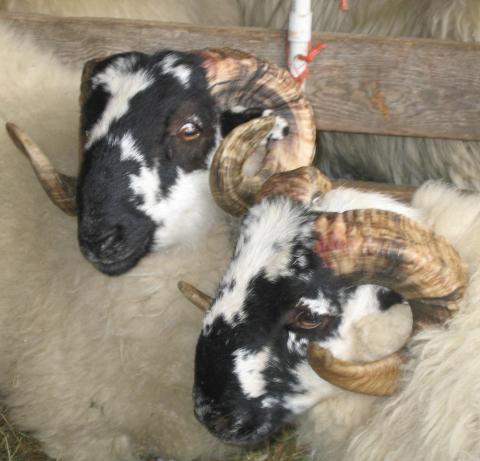- Home
- Articles
- Books
- At the Humming of the Wheel
- Beginning Spin
- Colors: To Dye For
- DYEING IS NOT ALCHEMY! A Beginner's Guide to Theory and Methods of Natural Dyeing
- Handspindles: Not Just for Demonstration Anymore
- Mix It Up: Blending 101
- Parenthood: Vester Field Guides
- Spinning Bast
- Spinning Cotton
- Textile History - A Time Line
- The Ply's the Thing
- Variations on a Draw
- Patterns
- Workshops
- Dyeing >>
- Spinning >>
- Beyond the Twist
- Bast Fiber Without Stress
- Beginning Spinning
- De-mystifying Woolen and Worsted
- Fiber Preparations
- Mix It Up - Blending 101
- Not Just Plan Wool
- Spinning on a Handspindle
- Spinning with a Southern Accent
- Take a Cotton to Spinning Cotton
- The New Fibers
- The Ply's the Thing
- Variations On A Draw
- Variations on a Draw: Beyond Wool
- Crochet & Knit >>
- Beginning Crochet
- Crochet a Garden
- Crochet a Garment with your Handspun, No Matter What
- Crochet a Mobius Crunch
- Crocheted Pansies
- Crocheting a Baby (or not) Afghan with Your Handspun
- Introduction to Filet Crochet
- Mixing Knit and Crochet
- Not Your Grandmother's Granny Squares
- Scrumbling and Doodling in Crochet
- Slip Stitches: Using Slip Stitches In Your Knitting
- Tunisian Crochet
- Lectures >>
- Misc. >>
- Paula's Bio
- Favorite Links
- Downloads
- Calendar
- Gallery
- Contact Us
- About Us
- Privacy Policy
Why I spin Wool

I often say it is because of the faces. There is just something about the faces of sheep. But it is also the variety, the many different kinds of wool that seems to be a never-ending lesson in fiber.
I am not much interested in the coarser breeds, those that seem to be better suited to tapestries or carpets than blankets or wearables. I have often discovered that I have misjudged a breed just from forming an opinion from one fleece and forgetting it can’t possibly represent an entire breed. I like soft, fine breeds, but find I don’t really like processing those fleeces, so I often compromise and either send them off or buy them in a already prepared form. If I do process it, it seems to take me forever because I want to prepare it so that it is enjoyable to spin. I like carding a medium breed, so I spin a lot of medium fleeces and it may take me a long time to use the yarn.
I find myself experimenting a lot with wools. I want to see wools that come from a certain area, a breed, its relatives and the breeds that make up a breed’s genetic family. What if I comb it, what if I card it, should I make thick or thin yarns, how many plies? I love dyeing it, but sometimes I then give it away because I am done and really don’t want to spin it.
In my 37 or so years of spinning, I have seen breeds come into popularity and fall out of favor. I have seen the transformation of just spinning anything you could find, to specializing and forgetting about the local market. I have seen people who have raised sheep, thinking they would market them to handspinners and when they realize that handspinners cannot possibly pay for a fleece what might be needed to support that sheep for a year, they decide to raise milk goats instead. I have discovered that somehow people raise sheep because they love the sheep, or their families have been raising sheep for years, or some other reason. I have met people who started with just a couple of sheep because they planned to spin the wool, but end up with flocks because sheep do what all animals do, and sheep, in particular, are flock animals, not solitary ones.
There is a resurgence in interest in wool, and in local wool. I find myself looking closer to home for some breeds that I think need to be experimented with before our local sources give up and start raising milk goats, cows or chickens.
I meet people who name each and every one of their sheep; I meet people who never name their sheep. I meet people who raise sheep because of their faces; they tell me there is just something about their faces. Sheep people and spinning people - our lives are cycles. I seem to have arrived back at the beginning. Spin On.
- Log in to post comments
